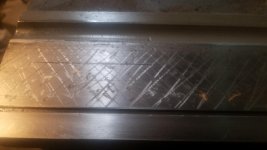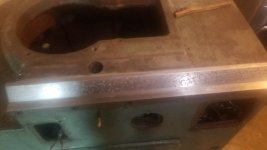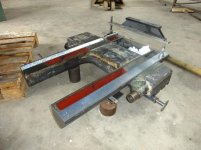morestainless
Cast Iron
- Joined
- Dec 29, 2016
Looking for some suggestions on how to eventually attack these ways. It's a Cincinnati #2 Tool Cutter/Grinder (24" ways) that someone took a hand grinder to. Regrind + turcite on saddle? Scrape what is left flat?








